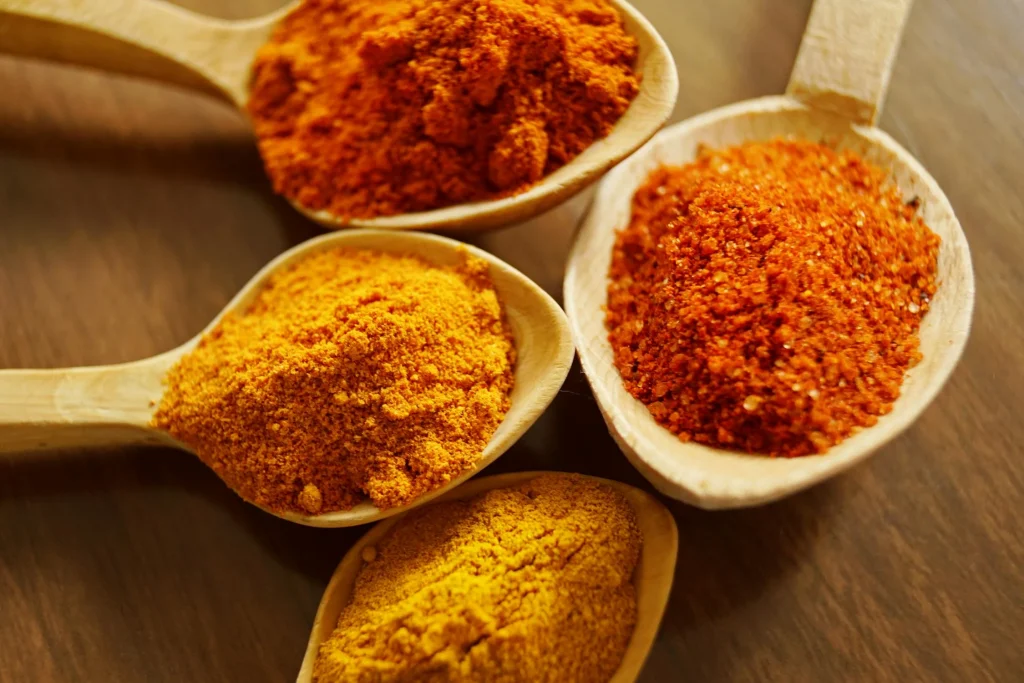7 Essential Seasonings to Spice Up Your Meals

Cooking is a craft in which tastes on the plate produce symphonies. Offering richness, depth, and a unique personality, a sprinkle of the correct spice can turn even the most basic meal into a masterwork. Soups get warmth from seasons, sauces from zest, and roasts from intricacy. Every combination links history, civilizations, and gastronomic innovation. Whether you are improving a classic dish or trying out fresh ideas, how to utilize spices is really crucial for improving your food. These fragrant additives excite your senses, therefore transforming your dining experience, not just flavoring your meal.
Black Pepper
Black pepper is the missing spice from every full spice rack. Called the “king of spices,” it enhances almost every meal. The earthy and somewhat spicy taste of black pepper accentuates flavors and transforms dull food into vivid masterpieces. Beyond taste, black pepper releases its essential oils and accentuates its inherent scent by adding a subdued heat that increases with new grinding. Always use the best pepper grinder for optimum results to guarantee a uniform grind preserving the natural flavor of the pepper.
Black pepper is very flexible in savory foods. It strikes a careful balance between warmth and sharpness, improving everything from creamy sauces to grilled veggies. For sweets, a sprinkling of finely crushed black pepper complements sweetness and gives food like fruit salads or chocolate mousses unexpected richness. Black pepper not only improves food’s flavor but also gives your cooking a sophisticated touch.
Paprika
Made from crushed and dried peppers, paprika is an essential flavor with sweet, smoky, and fiery variants. Its vivid crimson color gives food visual appeal and a variety of tastes ranging from light sweetener to strong smokiness. Because every kind of paprika has a different use in the kitchen, it is a flexible and indispensable spice.
Paprika gives classic stews and soups a strong, palate-friendly warmth. Particularly smoky paprika gives grilled meats and roasted vegetables a great depth of taste, therefore enhancing them. On the other hand, sweet paprika’s subdued sweetness softens the richness of cream-based foods. Whether mixed into marinades or sprinkled over deviled eggs, paprika is a flavor that gives your food a certain flare.
Cumin
A pillar of many world cuisines, cumin has an earthy, almost nutty taste. Its clear scent gives everything, from Mexican tacos to Indian curries, warmth, and complexity. This little seed has great power; it can turn food into aromatic, delicious works of art.
Cumin provides a grounding component in savory foods that counter strong tastes. Before grinding, toasting cumin seeds improves their scent, therefore enhancing their influence on stews, soups, and rice dishes. With its character, cumin takes the front stage in spice combinations like garam masala or ras el hanout, therefore anchoring the kaleidoscope of aromas. Used sparingly, it also accentuates baked items and sweets by providing a surprising degree of complexity.
Garlic Powder
Considered a time-saving substitute for raw garlic, garlic powder has a strong garlicky taste. From dry rubs to marinades, where its fine texture enables equitable distribution of taste, its adaptability makes it a mainstay in everything.
Roasted vegetables, grilled meats, and heavy pasta meals receive a strong taste explosion from garlic powder. It enhances everything from Italian herb combinations to BBQ spices by blending easily into spice mixtures. Its lengthy shelf life makes it a must-have ingredient as it guarantees that your dishes taste great even in cases of fresh garlic shortage.
Oregano
Synonymous with Mediterranean cuisine, oregano adds a fragrant and somewhat bitter taste that balances a variety of meals. Its adaptability makes it indispensable in veggies, meats, and even pizzas.
Oregano gives proteins their strong herbal scent when added to marinades, therefore adding layers of flavor that accentuate the inherent character of the meal. Its strong taste balances ingredients easily in soups and stews by cutting through their richness. A standout in salad dressings as well, oregano gives even the most basic vinaigrettes depth.
Turmeric
Both a culinary and nutritional powerhouse, turmeric has a brilliant yellow color and a subdued, earthy taste. This vivid spice gives food more visual appeal and a warm, somewhat harsh flavor.
Turmeric is a mild flavor booster in soups and curries that balances other spices without overwhelming them. Its flavor and color can improve rice recipes, transforming basic grains into golden jewels. Because of its special qualities, turmeric is essential in both conventional cooking and contemporary cuisine, as it gives your work depth and character.
Cinnamon
Though often connected with pastries, cinnamon is a very flexible flavor that also improves savory cuisine. Its sweet and almost woodsy taste gives savory and sweet dishes richness and warmth.
Cinnamon improves the taste of baked products, puddings, and drinks in sweet cuisine, therefore producing familiar and comfortable combinations. It gives stews, chili, and roasted meats a startling depth in savory cuisine. Cinnamon’s unique, fragrant taste transforms food into gastronomic masterpieces, whether combined with sugar or spice.
Conclusion
Every good meal starts with seasonings. They highlight the wonder of culinary imagination by transforming basic components into remarkable feasts. Every spice enhances your cuisine with different tastes and smells, therefore telling a different narrative. Learning these basics guarantees that every meal makes a lasting impact.





